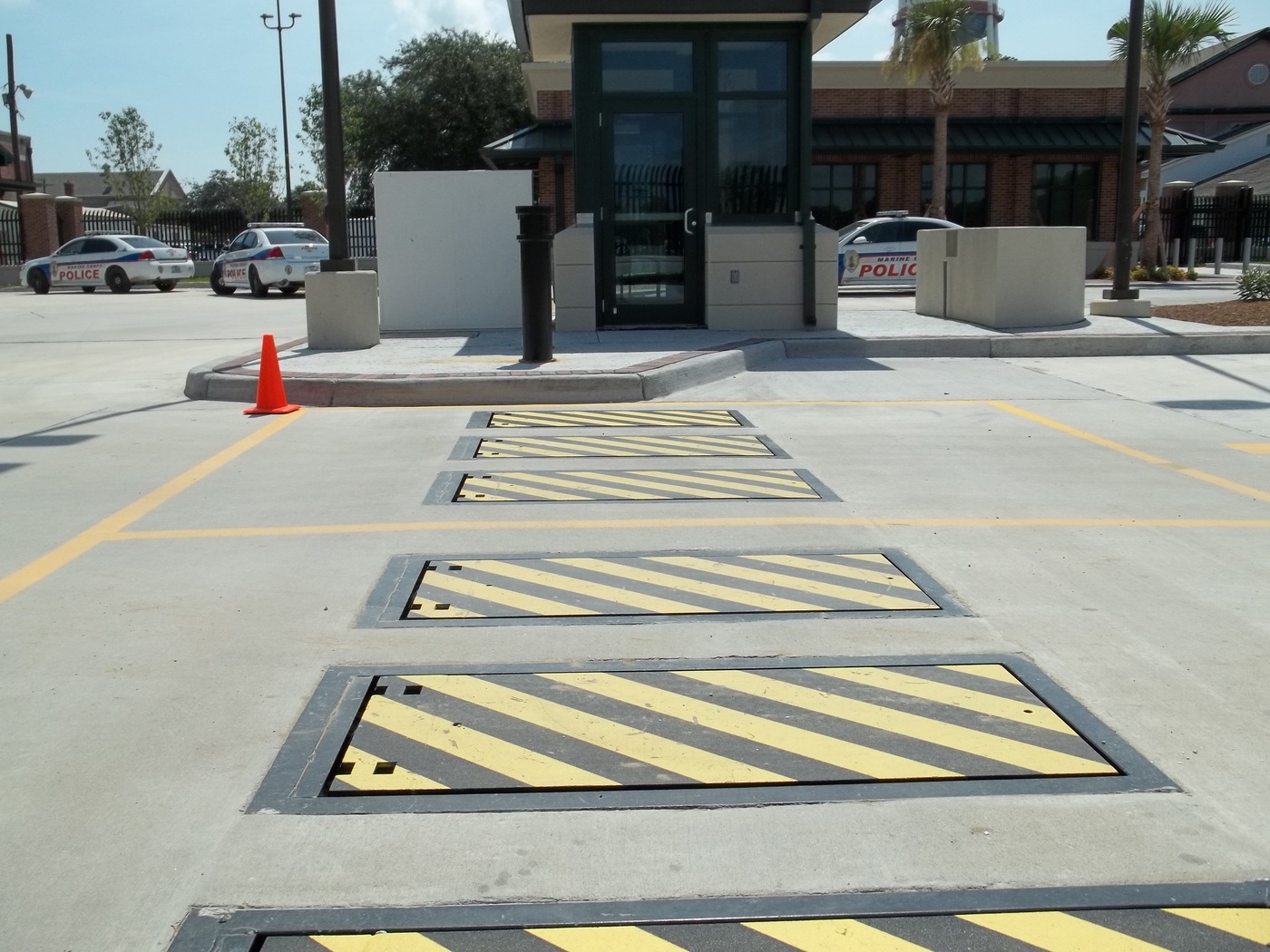How Wedge Barriers can Save You Time, Stress, and Money.
Wiki Article
The 5-Minute Rule for Wedge Barriers
Table of ContentsSome Known Questions About Wedge Barriers.About Wedge Barriers


The spring rod 58 is coupled to a webcam(e. g., webcam 80 shown in FIG. 4) of the lifting mechanism 50. The springtimes 60 disposed concerning the spring pole 58 are kept in compression by springtime supports 62, including a repaired spring support 64. That is, the set springtime support 64 is repaired relative to the structure 14 et cetera of the bather 10.
Some Known Questions About Wedge Barriers.
g., springtime support 65 )might be taken care of to the end of the springtime pole 58 to make it possible for compression of the springs 60. As the springtimes 60 are compressed between the springtime supports 62, the springtime assembly 54 creates a force acting on the cam combined to the springtime my blog pole 58 in a direction 66. The remaining force applied to the cam camera deploy release wedge plate 16 may might provided by an electromechanical actuator 84 or other actuator. The springtime assembly 54 and the actuator 84(e. g., electromechanical actuator)may operate together to convert the camera and raise the wedge plate 16.
As stated above, the spring assembly 54 puts in a continuous pressure on the cam, while the electromechanical actuator may be managed to apply a variable force on the camera, thereby enabling the training and lowering( i. e., releasing and retracting )of the wedge plate 16. In particular personifications, the continuous force applied by the springtime assembly 54 may be flexible. g., electromechanical actuator) is disabled. As will certainly be appreciated, the spring assembly 54 might be covered and protected from debris or various other components by a cover plate(e. g., cover plate 68 received FIG. 4) that might be considerably flush with the raised surface 38 of the foundation 14. As mentioned over, in the released setting, the wedge plate 16 serves to obstruct accessibility or traveling beyond the barrier 10. The obstacle 10(e. g., the wedge plate 16 )might block pedestrians or lorries from accessing a property or path. As reviewed over, the barrier 10 is connected to the support 30 secured within the structure 14,

front braces 71. As an outcome, the affiliation assemblies 72 may pivot and turn to make go to these guys it possible for the collapse and expansion of the affiliation assemblies 72 throughout retraction and implementation of the bather 10. The affiliation assemblies 72 reason movement of the wedge plate 16 to be restricted. If a car is traveling towards the deployed wedge plate 16(e. For instance, in one circumstance, the safety and security legs 86 might be prolonged duringmaintenance of the barrier 10. When the safety legs 86 are released, the safety and security legs 86 sustain the weight of the wedge plate 16 against the surface 12. Therefore, the training system 50 may be shut off, serviced, removed, changed, etc. FIG. 5 is partial perspective view of an embodiment of the surface-mounted wedge-style barrier 10, highlighting the cam 80 and the web cam surface areas 82 of the training device 50. Specifically, 2 camera surface areas 82, which are described as lower cam surface areas 83, are placed below the cam 80. The lower cam surfaces 83 might be repaired to the surface 12 (e. For example, the reduced webcam surface areas 83 and the placing plate 85 may develop a single item that is protected to the anchor 30 by bolts or various other mechanical fasteners. Additionally, 2 like this camera surfaces 82, which are described as upper camera surfaces 87, are placed above the camera 80 and coupled to (e. In various other embodiments, interfering layers or plates may be placed between the surface area 12 and the lower camera surfaces 83 and/or the wedge plate 16 and the top webcam surface areas 87 As pointed out over, the camera 80 converts along the cam surfaces 82 when the wedge plate 16 is lifted from the retracted setting to the released position. Furthermore, as discussed over, the springtime assembly 54 (see FIG. 3 )might give a force acting upon the web cam 80 in the direction 102 by means of springtime rod 58, which may lower the force the electromechanical actuator 84 is needed to put on the cam 80 in order to actuate and raise the wedge plate 16. 1 )to the deployed setting(see FIG. 4). As revealed, the cam 80 includes track wheels 104(e. g., rollers), which call and translate along the cam surface areas 82 during operation.
Report this wiki page